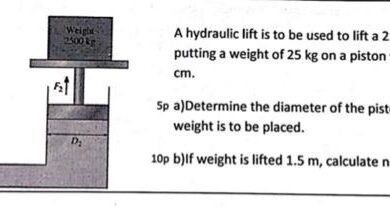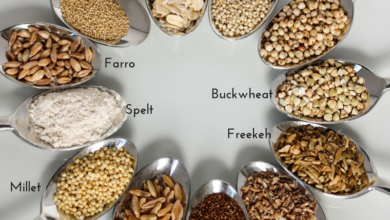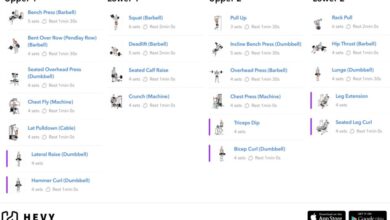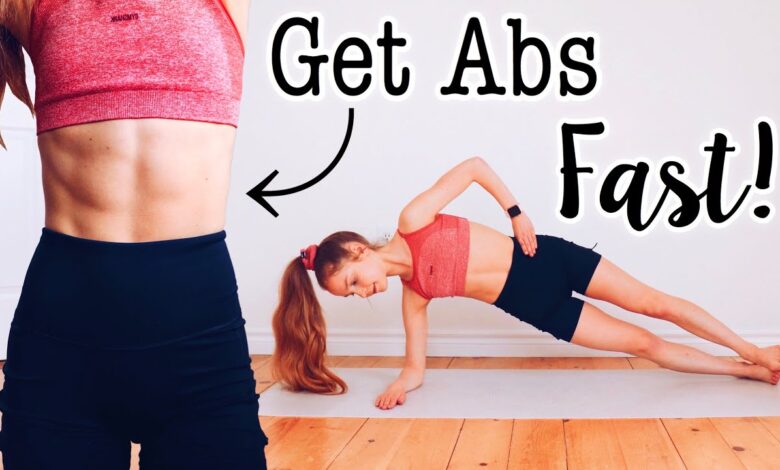
Abs Workout: Where to Start
Abs workout need start – Abs Workout: Where to Start – Everyone wants those sculpted abs, but knowing where to begin can be daunting. It’s not just about crunches and planks; it’s about a holistic approach that considers your fitness goals, proper form, nutrition, and recovery.
This guide will equip you with the knowledge and tools to kickstart your abs journey.
From setting realistic goals and understanding essential exercises to optimizing your nutrition and prioritizing rest, we’ll cover all the key aspects of building a strong and defined core. Whether you’re a beginner or looking to take your abs workout to the next level, this comprehensive guide will provide valuable insights and actionable steps to help you achieve your desired results.
Understanding Your Fitness Goals
It’s important to set realistic goals for your abs workout. Having clear objectives will keep you motivated and help you track your progress.
Defining Abs Goals
Setting specific abs goals is crucial for effective training. Here are some examples of common goals:
- Defining Abs:Aiming to make your abs more visible by reducing body fat percentage. This goal focuses on improving body composition.
- Reducing Belly Fat:Targeting a specific area of fat reduction around the abdomen. This goal emphasizes localized fat loss, which can be achieved through diet and exercise.
- Increasing Core Strength:Enhancing the strength and stability of your core muscles. This goal focuses on functional strength and can improve overall fitness.
Consistency and Patience in Achieving Abs Goals
Achieving your abs goals requires consistent effort and patience. It’s essential to understand that results take time and dedication.
- Consistency:Regular exercise and a balanced diet are crucial for long-term success. Aim for at least three to four workouts per week, focusing on both cardio and strength training.
- Patience:Don’t get discouraged if you don’t see immediate results. Building muscle and reducing fat takes time. Be patient and consistent with your efforts, and you will eventually achieve your goals.
Essential Abs Exercises
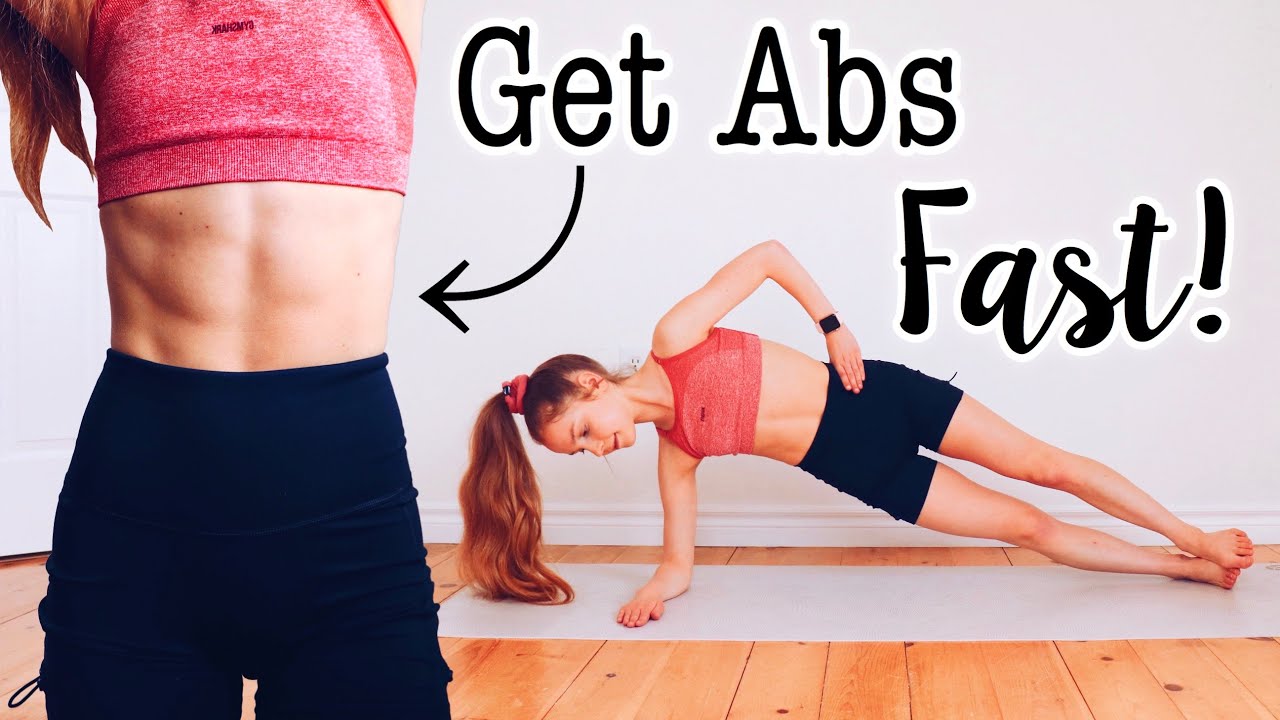
A strong core is crucial for overall fitness, supporting your spine, improving posture, and enhancing athletic performance. This section will explore some of the most effective abs exercises to help you achieve your fitness goals.
Getting started with an abs workout can feel daunting, but it’s a journey worth taking! While you’re focusing on those core muscles, you might wonder if simply standing burns enough calories to aid weight loss. The answer, as explored in this article does standing burn enough calories to aid weight loss , is that while standing does burn more calories than sitting, it’s not a primary weight loss strategy.
But remember, consistent effort with your abs workout, combined with a healthy lifestyle, will lead to the results you desire!
Types of Abs Exercises
Understanding the different types of abs exercises is essential for creating a well-rounded workout routine. Abs exercises can be categorized based on the muscle group they target:
- Upper Abs:Exercises targeting the upper abdominal muscles, responsible for flexing the spine and bringing the chest towards the hips.
- Lower Abs:Exercises focusing on the lower abdominal muscles, which help control hip flexion and pelvic tilt.
- Obliques:Exercises targeting the oblique muscles, located on the sides of the abdomen, responsible for twisting and rotating the torso.
Essential Abs Exercises
Here’s a table summarizing essential abs exercises, their target muscle groups, and tips for proper form:
| Exercise | Target Muscle Group | Sets & Reps | Tips for Proper Form |
|---|---|---|---|
| Crunches | Upper Abs | 3 sets of 10-15 reps |
|
| Leg Raises | Lower Abs | 3 sets of 10-15 reps |
|
| Plank | Core (including abs, obliques, and lower back) | Hold for 30-60 seconds, repeat 3 times |
|
| Russian Twists | Obliques | 3 sets of 10-15 reps per side |
|
Beginner-Friendly Abs Exercises
For those starting their abs journey, focusing on building a strong foundation is key. Here are some beginner-friendly exercises:
- Modified Crunches:Similar to crunches, but with knees bent and feet flat on the floor.
- Knee Raises:Lie on your back with knees bent and feet flat on the floor. Engage your core and lift your knees towards your chest.
- Side Plank:Similar to a plank, but with one forearm on the ground and your body stacked vertically. Hold for 30-60 seconds, repeat on each side.
Sample Abs Workout Routine
This sample workout routine incorporates various abs exercises, targeting different muscle groups:
- Warm-up:5 minutes of light cardio, such as jogging in place or jumping jacks.
- Workout:
- Crunches: 3 sets of 10-15 reps
- Leg Raises: 3 sets of 10-15 reps
- Plank: Hold for 30-60 seconds, repeat 3 times
- Russian Twists: 3 sets of 10-15 reps per side
- Cool-down:5 minutes of stretching, focusing on your core muscles.
Nutrition for Abs: Abs Workout Need Start
You can’t out-train a bad diet. It’s a common saying in the fitness world, and it’s true. While exercise is essential for building muscle and burning fat, it’s your nutrition that truly determines your body composition. To get those sculpted abs, you need to fuel your body with the right foods.
Importance of a Balanced Diet
A balanced diet is the foundation of a successful abs transformation. It provides your body with the essential nutrients it needs to function optimally, including building and repairing muscle tissue, providing energy for workouts, and supporting overall health.
- Macronutrients:You need to consume a balance of carbohydrates, protein, and fats. Carbohydrates provide energy for workouts, protein helps build and repair muscle, and fats support hormone production and cell function.
- Micronutrients:Don’t forget about vitamins and minerals. They play a crucial role in various bodily functions, including metabolism, energy production, and immune system support.
Reducing Calorie Intake
To reveal your abs, you need to create a calorie deficit. This means consuming fewer calories than you burn. This can be achieved through various strategies.
- Portion Control:Pay attention to serving sizes and avoid overeating. Use smaller plates and measure out your food to ensure you’re consuming appropriate portions.
- Mindful Eating:Slow down, savor your food, and pay attention to your body’s hunger and fullness cues. This can help prevent overeating and improve digestion.
- Choose Nutrient-Dense Foods:Focus on consuming foods that are packed with nutrients but low in calories. Fruits, vegetables, lean protein sources, and whole grains are excellent choices.
Increasing Protein Consumption
Protein is essential for building and repairing muscle tissue. When you increase your protein intake, you help your body recover from workouts more effectively and support muscle growth.
- Target Protein Intake:Aim for 1 gram of protein per pound of body weight per day. This can vary depending on your activity level and goals.
- Protein Sources:Incorporate lean protein sources like chicken, fish, tofu, beans, and Greek yogurt into your diet.
- Protein Timing:Consume protein throughout the day, especially after workouts, to maximize muscle recovery and growth.
Role of Hydration
Hydration is crucial for muscle recovery and overall health. It helps transport nutrients to your muscles, remove waste products, and regulate body temperature.
- Drink Water Regularly:Aim for at least 8 glasses of water per day. You may need more if you exercise regularly or live in a hot climate.
- Listen to Your Body:Pay attention to your thirst cues and drink water throughout the day, not just when you’re feeling thirsty.
- Avoid Sugary Drinks:Limit your intake of sugary drinks like soda and juice, which can contribute to dehydration and weight gain.
Rest and Recovery
Building a strong core requires more than just intense workouts. Adequate rest and recovery are crucial for muscle growth, preventing injuries, and maximizing your fitness progress. It’s like giving your body a chance to rebuild and become stronger after a demanding workout.
Getting those abs popping isn’t just about crunches and planks, it’s also about what you eat and when you eat it. You might be wondering if does meal timing matter for losing weight , and the answer is a bit nuanced.
While it’s true that overall calorie intake is the biggest factor, strategically timing your meals can help you maximize fat burning and build muscle, which are both crucial for those coveted abs.
Importance of Rest and Sleep for Muscle Growth
During sleep, your body releases hormones that promote muscle repair and growth. This is when your muscles recover from the stress of exercise, and new muscle tissue is built. Getting enough sleep is essential for maximizing your abs workout results.
Aim for 7-9 hours of quality sleep each night.
Listening to Your Body and Avoiding Overtraining
Overtraining can lead to fatigue, injuries, and plateaus in your fitness progress. It’s important to listen to your body and take rest days when needed.
Starting an abs workout routine is a great way to tone up, but you need to make sure you’re fueling your body properly. If you’re struggling to get enough carbs to support your workouts, check out this article on how to increase your carb intake with healthy options: ask the rd how can i increase carbs with healthy options.
With the right nutrition plan, you’ll be able to power through those ab exercises and see amazing results!
- Pay attention to your body’s signals: If you feel fatigued, sore, or experience joint pain, it’s a sign that your body needs a break.
- Don’t push yourself too hard: Start with a moderate workout routine and gradually increase the intensity and duration over time. This allows your body to adapt to the demands of exercise.
- Take rest days: Plan for at least one or two rest days per week. This allows your muscles to recover and rebuild.
The Role of Stretching and Foam Rolling
Stretching and foam rolling can help improve flexibility, reduce muscle soreness, and prevent injuries. They also improve blood flow and circulation, promoting muscle recovery.
- Stretching: Hold each stretch for 30 seconds, focusing on your core muscles, including your obliques, lower back, and hip flexors.
- Foam rolling: Use a foam roller to massage your muscles, releasing tension and improving flexibility. Target areas like your lower back, hip flexors, and glutes.
Staying Motivated
Sticking to an abs workout routine can be challenging, especially when life gets busy. Motivation ebbs and flows, and it’s easy to fall off track. But with a few strategies, you can keep your commitment to achieving your fitness goals.
Staying Motivated with Effective Strategies, Abs workout need start
Maintaining motivation requires a proactive approach. It’s not just about willpower; it’s about setting yourself up for success. Here are some strategies to help you stay on track:
- Set Realistic Goals: Don’t try to do too much too soon. Start with a workout routine that you can realistically maintain and gradually increase the intensity or duration as you progress.
- Find an Activity You Enjoy: If you don’t enjoy your workouts, you’re less likely to stick with them. Experiment with different types of exercise until you find something that you look forward to doing.
- Make it a Habit: Schedule your workouts into your week like any other important appointment. Consistency is key to seeing results.
- Track Your Progress: Keeping a workout log or using a fitness tracker can help you see how far you’ve come and stay motivated to continue.
- Reward Yourself: Celebrate your achievements with small rewards, such as a new workout outfit or a relaxing massage.
- Find a Workout Buddy: Having a workout partner can provide support, accountability, and motivation. You can push each other to do your best and make working out more enjoyable.
- Join a Fitness Community: Connecting with others who share your fitness goals can provide inspiration and encouragement. There are many online and offline fitness communities to join.
Overcoming Plateaus and Setbacks
Everyone hits plateaus or experiences setbacks in their fitness journey. The key is to not give up but to adjust your approach. Here’s how:
- Don’t Be Afraid to Change Things Up: If you’re not seeing results, it might be time to switch up your workout routine. Try new exercises, increase the intensity, or change the order of your workouts.
- Don’t Give Up Too Soon: Plateaus are a normal part of the fitness process. Don’t get discouraged if you don’t see results immediately. Keep working at it, and you’ll eventually break through.
- Focus on the Process, Not Just the Outcome: Enjoy the journey of getting fitter and stronger. Celebrate your progress, no matter how small, and focus on the positive changes you’re making.
Closing Summary
Remember, building strong abs is a journey, not a sprint. It requires patience, consistency, and a commitment to both exercise and healthy eating. By following the guidelines Artikeld in this guide, you can develop a personalized abs workout plan that fits your lifestyle and helps you achieve your fitness goals.
So, take that first step, embrace the challenge, and enjoy the process of sculpting your dream physique!

